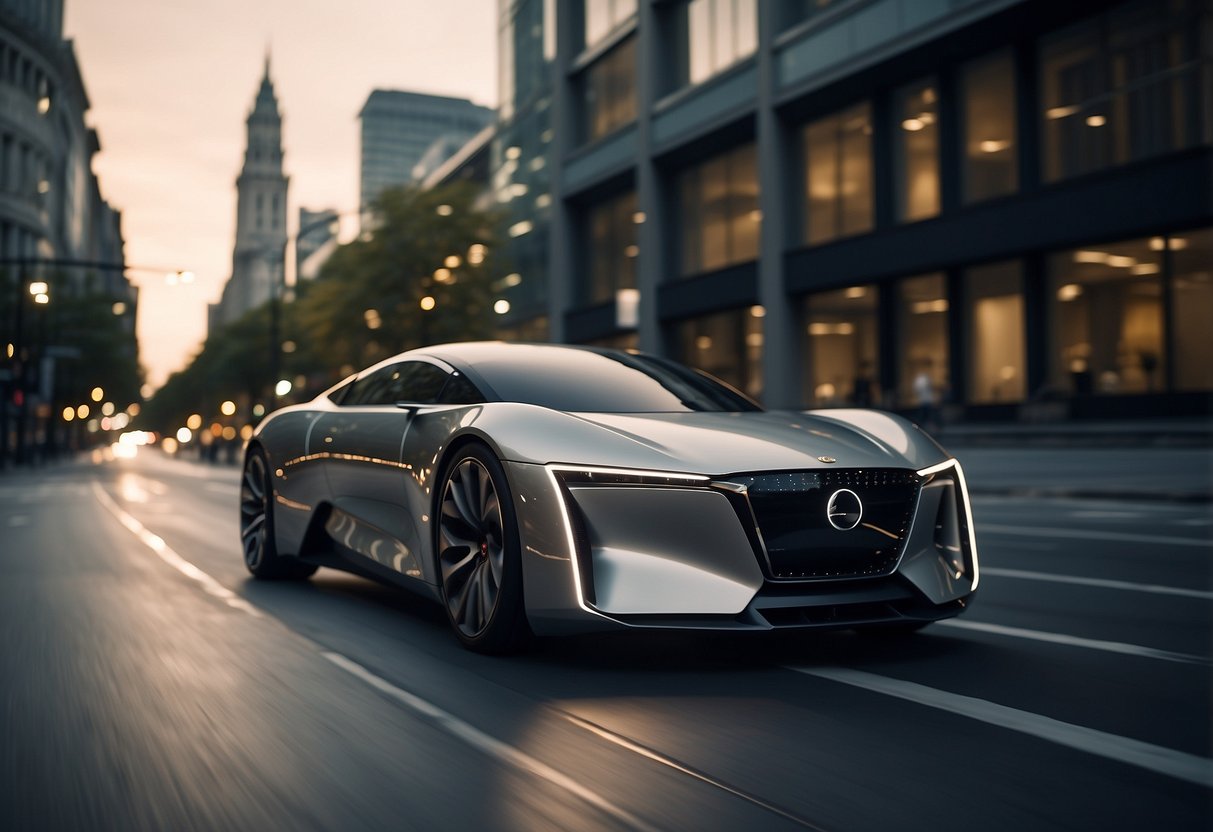
Impact on Society and Urban Mobility
Autonomous driving in luxury vehicles has significant implications for society and urban mobility. It promises to transform transportation by introducing advanced technologies, and it aims to reduce congestion and emissions through efficient travel systems.
Transforming Transportation
Autonomous luxury vehicles are poised to revolutionize personal and public transportation. They offer an enhanced travel experience with features like personalized comfort settings, advanced navigation systems, and integrated AI for real-time decision-making. These vehicles can provide seamless travel by communicating with traffic infrastructure and other vehicles, enhancing both safety and efficiency.
This transformation impacts society by making transportation more accessible, particularly for individuals who cannot drive. It also contributes to increased productivity, as travel time can be used for work or relaxation. Autonomous vehicles could change urban landscapes by reducing the need for extensive parking facilities, since vehicles can drop passengers off and relocate themselves.
Reducing Congestion and Emissions
Autonomous driving technology significantly impacts urban mobility by reducing congestion and emissions. Through optimized routing and constant communication with traffic management systems, these vehicles can avoid traffic jams and take alternative routes, leading to smoother traffic flow.
Additionally, autonomous vehicles are more likely to use eco-friendly, sustainable energy sources. Their efficient driving patterns further minimize fuel consumption and emissions, contributing to cleaner urban environments.
As these technologies become integrated, they will potentially lead to a decline in the number of vehicles on the road. Ridesharing and fleet services could become more popular, reducing the total number of cars and alleviating congestion. This contributes to a more sustainable and eco-friendly urban transportation system.
Autonomous Fleet and Logistics
Autonomous fleet technologies revolutionize logistics by enabling efficient robotaxis, shared mobility services, autonomous trucks, and commercial operations. Key advancements focus on shared transportation and precision in commercial logistics.
Robotaxis and Shared Mobility Services
Robotaxis leverage advanced AI to navigate urban environments, offering a cost-effective and time-efficient alternative to traditional transportation. These autonomous vehicles reduce traffic congestion and emissions by optimizing routes based on real-time data.
Shared mobility services benefit from economies of scale, providing riders with affordable and convenient options. Major players like Waymo and Cruise are already testing fleets in major cities. Safety remains a priority with continuous updates to AI algorithms ensuring reliable performance. Market penetration relies on public trust and regulatory support.
Autonomous Trucks and Commercial Operations
Autonomous trucks transform commercial logistics by offering continuous operation, increased fuel efficiency, and reduced human error. These trucks are equipped with sensors and cameras that monitor road conditions and surroundings, enabling precise navigation.
Logistics companies benefit from reduced operational costs and improved delivery times. Companies like Tesla and Daimler are at the forefront, developing autonomous trucking solutions that promise to reshape the industry. Challenges include regulatory hurdles and the need for infrastructure upgrades to accommodate these advanced vehicles.
Advancements in autonomous technology mark a significant shift in how goods and passengers are transported, promising a future of enhanced efficiency and safety across the entire logistics spectrum.
Market Trends and Consumer Insights
Market research reveals evolving trends in autonomous luxury vehicles, with consumer preferences and adoption rates shaping the industry’s future. Surveys are uncovering essential market insights.
Surveys and Market Analysis
Recent surveys highlight a growing interest in autonomous features among luxury car buyers. Consumers prioritize safety, convenience, and cutting-edge technology, with many willing to pay a premium for advanced driving aids.
Market analysis shows that automakers are investing heavily in autonomous technology, driven by high demand. Analysts predict significant growth in this segment, spurred by innovations and consumer enthusiasm.
Luxury brands are closely monitoring these trends to tailor their offerings, ensuring they meet the sophisticated tastes and expectations of their clientele. This alignment between consumer desires and market dynamics is critical for sustained success.
Adoption Rates and Customer Preferences
Adoption rates for autonomous driving features in luxury vehicles are increasing steadily. High-income consumers are more inclined to embrace these technologies, valuing the enhanced comfort and safety they provide.
Preferences vary, but common themes include a desire for seamless integration and reliability. Customers expect these features to be intuitive and enhance their driving experience without compromising control.
Automakers are responding by developing sophisticated systems that cater to these preferences. As technology advances, it is anticipated that adoption rates will continue to climb, making autonomous driving a standard feature in luxury vehicles.



